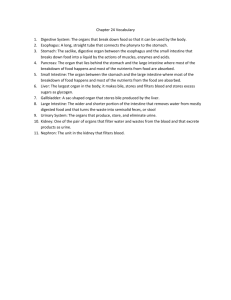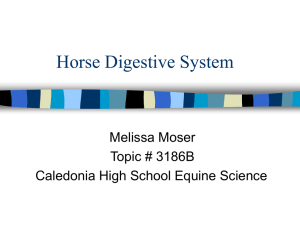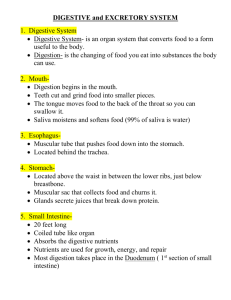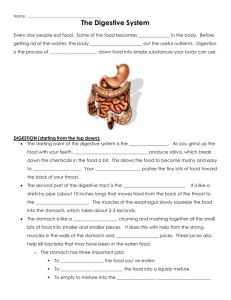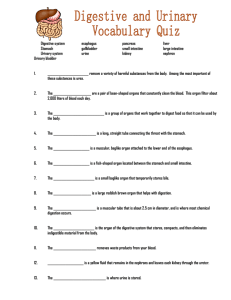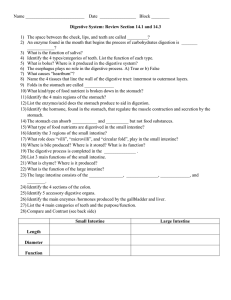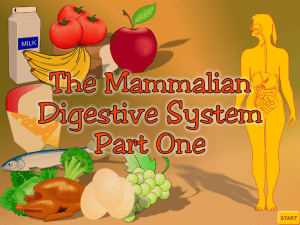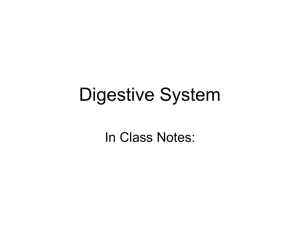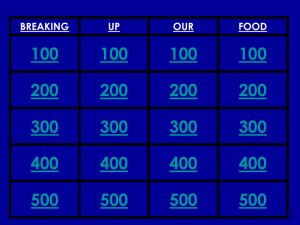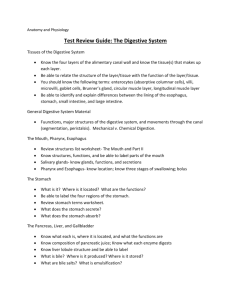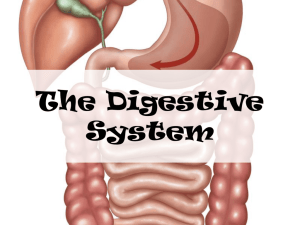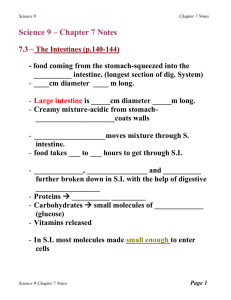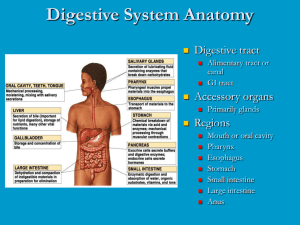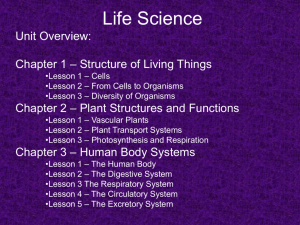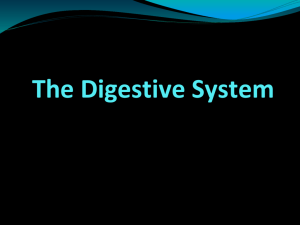Digestive diagram
advertisement
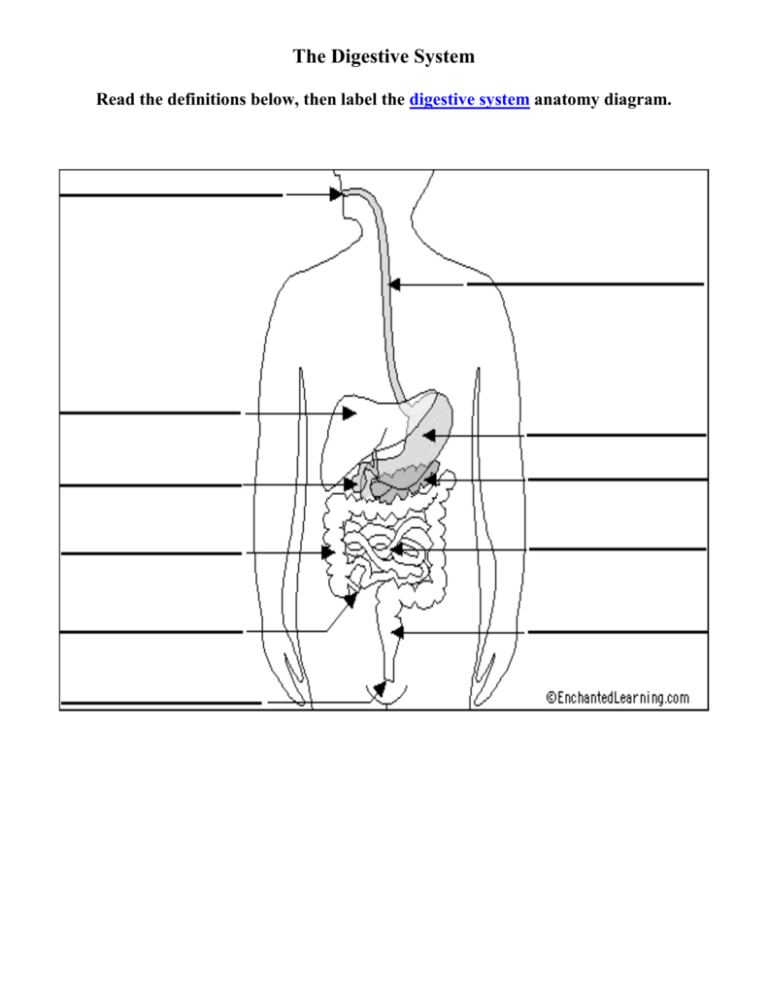
The Digestive System Read the definitions below, then label the digestive system anatomy diagram. The Digestive System anus - the opening at the end of the digestive system from which feces exit the body. appendix - a small sac located near the start of the large intestine. esophagus - the long tube between the mouth and the stomach. It uses rhythmic muscle movements (called peristalsis) to force food from the throat into the stomach. gall bladder - a small, sac-like organ located by the duodenum. It stores and releases bile (a digestive chemical which is produced in the liver) into the small intestine. large intestine - the long, wide tube that food goes through after it goes through the small intestine. liver - a large organ located above and in front of the stomach. It filters toxins from the blood, and makes bile (which breaks down fats) and some blood proteins. mouth - the first part of the digestive system, where food enters the body. Chewing and salivary enzymes in the mouth are the beginning of the digestive process (breaking down the food). pancreas - an enzyme-producing gland located below the stomach and above the intestines. Enzymes from the pancreas help in the digestion of carbohydrates, fats and proteins in the small intestine. rectum - the lower part of the large intestine, where feces are stored before they are excreted from the body. small intestine - the long, thin winding tube that food goes through after it leaves the stomach. stomach - a sack-like, muscular organ that is attached to the esophagus. When food enters the stomach, it is churned in an acid bath.



